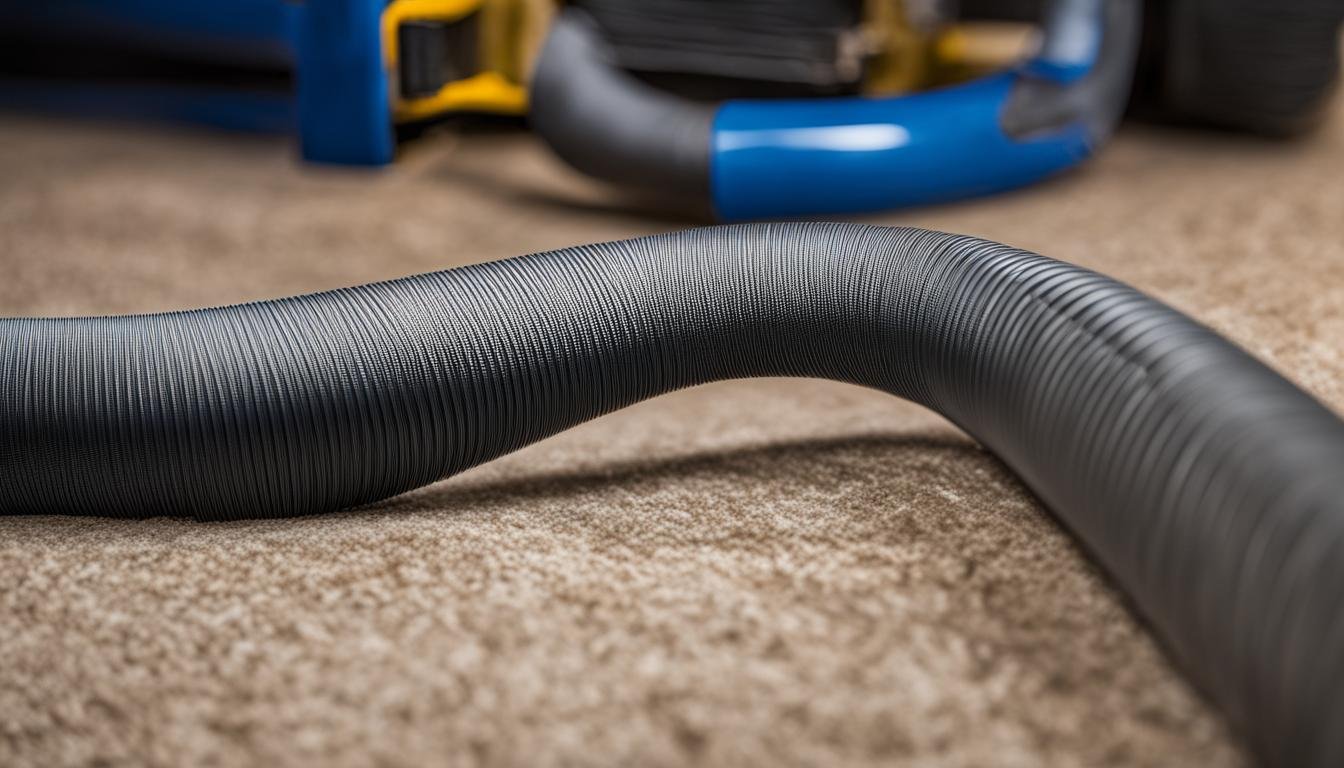When it comes to purchasing accessories for your vacuum cleaner, knowing the diameter of your hose is essential for a proper fit and optimal performance. In this article, I will guide you through the process of measuring your vacuum cleaner hose diameter so that you can easily find compatible tools and accessories.
Key Takeaways:
- Measuring the diameter of your vacuum cleaner hose ensures you purchase the right accessories for optimal performance.
- The most common vacuum cleaner hose diameters are 32mm, 35mm, and 36mm.
- Using a ruler, measure the distance from one end of the opening to the other to determine the diameter.
- Smaller diameter hoses are more maneuverable, while larger diameter hoses are better for picking up bigger debris.
- Choose the right vacuum hose size for the job to ensure efficient cleaning.
Vacuum Hose Sizes and Performance
The diameter of a vacuum cleaner hose plays a crucial role in its performance. Smaller diameter hoses offer greater maneuverability and flexibility, making them ideal for specific applications. Additionally, these hoses tend to be lighter, allowing for easier handling during cleaning tasks.
Conversely, larger diameter hoses excel at picking up bigger debris and are less likely to clog. This makes them particularly advantageous for heavy-duty cleaning jobs that involve larger particles or materials.
“A smaller diameter hose will have higher airflow velocity which is beneficial for smaller handheld power tools.” – Source 2
It is important to consider the airflow velocity when selecting the appropriate hose diameter for your vacuum cleaner. Smaller diameter hoses generate higher airflow velocity, which is advantageous for effectively capturing debris using smaller handheld power tools.
For general cleaning tasks, a medium diameter hose provides a balanced solution that offers sufficient power while offering decent maneuverability. These hoses serve as a versatile option that caters to a wide range of cleaning needs.
When it comes to connecting your vacuum cleaner to tools with similarly sized dust ports, a larger diameter hose is preferred. This ensures a seamless fit and enables efficient performance during cleaning sessions.
By understanding how vacuum hose diameter influences performance, you can make an informed decision when determining the suitable size for your cleaning needs. Selecting the right vacuum hose size ensures optimal suction power and efficiency, allowing for effective and thorough cleaning.
Conclusion
Measuring the diameter of your vacuum cleaner hose is a crucial step to ensure optimal performance and compatibility with accessories. By accurately determining the hose diameter, you can confidently select the right tools for efficient cleaning.
The most common vacuum cleaner hose diameters include 32mm, 35mm, and 36mm, but there are also less common sizes like 27mm, 38mm, and 40mm. To measure the diameter, simply use a ruler and measure the distance across the opening of the hose.
The hose diameter has a significant impact on the vacuum cleaner’s performance. Smaller diameter hoses offer enhanced maneuverability and are suitable for specific applications. On the other hand, larger diameter hoses are ideal for picking up bigger debris and reducing the likelihood of clogs. Therefore, choosing the right vacuum hose size is essential for efficient cleaning.
So, take the time to measure your vacuum cleaner hose diameter accurately. This simple task will help you make informed decisions when selecting accessories and ensure that your vacuum cleaner performs at its best.
FAQ
How do I measure the diameter of my vacuum cleaner hose?
To measure the diameter of your vacuum cleaner hose, place a ruler on the hollow part of the front of the handle and measure the distance in millimeters from one end of the circle to the other, including the edges of the opening.
What are the most common vacuum cleaner hose diameters?
The most common vacuum cleaner hose diameters are 32mm, 35mm, and 36mm.
Are there other sizes of vacuum cleaner hoses available?
Yes, there are less common sizes such as 27mm, 38mm, and 40mm.
How does the diameter of a vacuum cleaner hose affect its performance?
Smaller diameter hoses are more maneuverable and flexible, while larger diameter hoses can pick up bigger debris and are less likely to clog. The size of the hose also affects airflow velocity, with smaller diameter hoses having higher airflow velocity, and larger diameter hoses being better suited for general cleanup tasks.
Why is it important to choose the right vacuum hose size for the job?
Choosing the right vacuum hose size ensures optimal performance and efficient cleaning. The diameter of the hose determines its maneuverability, ability to pick up debris, and airflow velocity.





Leave a Reply